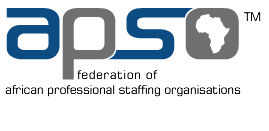You probably learned a new skill over the last year, and you’re not alone — particularly if you learned how to work with AI.
People develop skills all the time, of course. What’s new is the accelerated pace: The number of skills added by LinkedIn members grew by 36% over the last 12 months, compared with the previous 12.
While that’s a pretty sizable increase in pace, it’s dwarfed by the growth of AI-specific skills.

The number of AI skills added in the past year grew by 80%, covering both AI technical skill and AI literacy skills.
AI technical skills are the engineering skills you need to build, maintain, and deploy AI technologies — like machine learning or natural language processing; these skills are mostly confined to engineering talent.
The appeal of AI literacy skills, on the other hand, is far wider. AI literacy includes skills like prompt engineering and proficiency with tools like ChatGPT or Copilot, which are broadly applicable for nearly any knowledge worker.
Over the most recent 12 months, the number of AI literacy skills added by LinkedIn members increased by 177%, nearly five times faster than the 36% increase seen across skills overall.
Read on for a closer look at which members are developing AI skills on LinkedIn Learning — and to see how recruiting professionals in particular stand out.
The top roles and functions learning AI skills
You might not be too surprised to hear AI skills are growing rapidly, but do you have any idea as to what kind of workers tend to learn those skills?
Though software engineer is the single most common job title among those developing AI skills through LinkedIn Learning, the other top roles are less predictable, spanning nontechnical fields as well.

Project and product managers are also among the most likely to learn AI skills — which makes sense, as they have a lot to gain from harnessing the technology: Building a Gantt chart, which creates a visual picture of a project’s progress, by hand could take all day, but generative AI can help whip one up in a small fraction of that time.
At the same time, some may also feel threatened by these new tools. One popular course, Leveraging Generative AI for Project Management, opens with this common refrain, familiar to many recruiting professionals: “Generative AI will not replace project managers,” says instructor Ricardo Vargas, the founder of Macrosolutions, “but project managers who know how to use it will replace those who don’t.”
Intriguingly, professor was the fifth-most common role learning about AI, perhaps to better understand the technology that their students are already all too familiar with.
Let’s zoom back out a little and consider the top functions (high-level groupings of occupations, similar to departments within a large org) taking AI courses. While tech tops the list, there’s actually a diverse range of functions learning about AI — just as we saw with individual occupations.

Operations is the third-most common function, with process-focused professionals (like project managers) apparently eager to learn how to boost their productivity with AI.
Interestingly, sales and business development are the next most common functions taking AI courses on LinkedIn Learning. Though sales roles are typically rooted in strong people skills, GAI can make the more rote parts of the job easier.
Finally, let’s take a look at one AI learning metric where recruiting pros are showing significantly more growth than other groups.
Recruiting professionals are one of the fastest-growing groups learning AI skills
In the previous section, we considered the most common roles developing AI skills through LinkedIn Learning. This time, we’ll analyze what type of worker saw the sharpest uptick in learning.
Compared with a year ago, the number of people developing AI skills on LinkedIn Learning has grown by a remarkable 72%.

Marketers — a majority of whom expect AI to significantly alter how they work in the next year — saw a modestly higher increase than the overall rate, with a 77% jump over the past year. That’s in line with non-technical workers (those not in engineering or IT) overall. Sales professionals saw a slightly bigger increase than marketers, growing by 87% in the same time frame.
Recruiting professionals, though, saw a much bigger increase than either of those two functions, with a 129% growth rate. That’s nearly twice as fast as the growth rate among all LinkedIn members.
It’s a smart move by recruiters preparing for an agentic future, as AI has already changed the way companies hire. As LinkedIn’s own talent leaders, Erin Scruggs, global head of talent acquisition, and Jennifer Shappley, global head of talent, recently announced at Talent Connect, the narrative has officially shifted from “AI is coming” to “AI is here.”
Final thoughts
AI skills are evolving rapidly, and professionals across a wide spectrum — from engineering to sales to talent acquisition — are eager to keep up. Whether professionals are learning technical AI skills or AI literacy skills, those who invest in understanding AI today are better positioned for tomorrow’s opportunities. As we continue to track these shifts, it’s clear that staying ahead means embracing AI’s potential, regardless of your role.
Methodology
The number of skills explicitly added by members in the current 12-month period (October 2023 to September 2024) is compared with the number of skills developed in the previous 12-month period (October 2022 to September 2023) to highlight growth in skills. Only members who developed the skills while being employed in a full-time position are considered. LinkedIn Learning courses used to develop AI skills are identified. The number of learners in the last 12 months (October 2023 to September 2024) is used to identify top occupations and fastest-growing occupations of the learners.
...
Originally posted on LinkedIn





